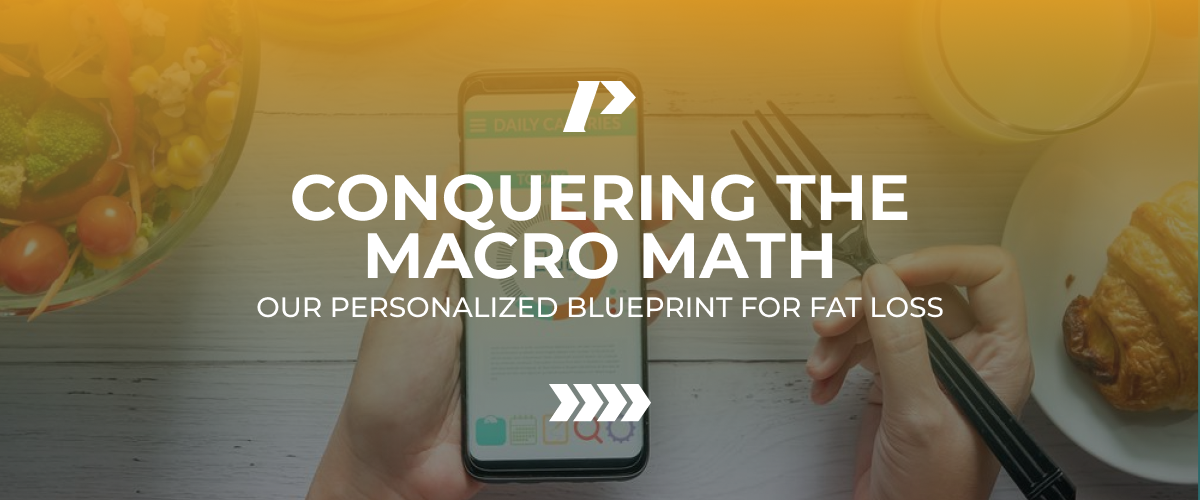Embarking on a fat loss journey can feel like navigating a maze of contradictory diet advice, but what if you could use science to simplify it? Understanding and applying the principles of macronutrients (macros) could be your key to a sustainable and effective weight loss plan that doesn’t just help you shed pounds but improves your overall health. Let's delve into the specifics of how you can leverage macro management to meet your fat loss goals, backed by science and tailored just for you.
Phase 1: Decoding Your TDEE
Your Total Daily Energy Expenditure (TDEE) is the total number of calories you burn each day. It includes your Basal Metabolic Rate (BMR)—the calories you burn at rest just to keep your body functioning—plus the energy you expend on physical activities. According to a study published in the American Journal of Clinical Nutrition, accurately calculating your TDEE is crucial for setting realistic diet and exercise goals.
To find your TDEE, use reliable online calculators or consult with a dietitian who can help you calculate it based on factors like age, weight, height, and activity level. This number is your caloric baseline for determining how much you need to eat to lose, gain, or maintain weight.
Phase 2: Creating Your Calorie Deficit
Science tells us that to lose weight, you must consume fewer calories than you burn. Creating a calorie deficit of about 10-20% below your TDEE can promote steady fat loss without triggering the negative effects associated with more severe calorie restrictions, such as muscle loss or hormonal disruptions. A moderate caloric deficit can also help preserve muscle mass and metabolic rate during weight loss.
Phase 3: The Macro Magic Show
Here’s how you can break down your calorie intake into macronutrients:
- Proteins (25-35% of calories): Protein has a high thermogenic effect, meaning it burns more calories during digestion compared to fats and carbs. Include high-quality protein sources like grilled chicken, fish, tofu, and legumes to enhance muscle synthesis and increase satiety, which can prevent overeating.
- Carbohydrates (40-50% of calories): Carbohydrates are your body’s preferred energy source. Choose complex carbs like oats, quinoa, and sweet potatoes that have a low glycemic index and provide a steady energy release. This helps manage blood sugar levels and reduces energy dips that might lead to snacking.
- Fats (20-30% of calories): Dietary fats are essential for hormonal balance and cell health. Focus on unsaturated fats found in avocados, nuts, seeds, and olive oil. These fats are beneficial for heart health and can help keep you fuller for longer.
Phase 4: Bio-Individuality is Key
Each body is unique, and metabolic responses to diets vary from person to person. It’s essential to adjust your macronutrient ratios based on how you feel physically and emotionally. A study in the *International Journal of Obesity* found that individuals respond differently to macronutrient compositions, which influences weight loss and energy levels. Use a food diary or app to monitor your intake and how it correlates with your energy levels, hunger cues, and fat loss progress.
Phase 5: Food Quality Matters
While macros are critical, the quality of your calories is paramount. Whole, unprocessed foods are more nutrient-dense and less energy-dense, meaning they provide more nutrients for fewer calories. They also contain more fiber, which aids digestion and helps maintain steady blood glucose levels. Studies have shown that a diet high in processed foods is linked to a higher risk of obesity and metabolic diseases like type 2 diabetes and heart disease.
Conclusion: Making It Work Long-Term
Fat loss is not just about following a plan; it’s about creating a lifestyle that supports your goals sustainably. By understanding and applying the principles of TDEE, creating a manageable calorie deficit, balancing your macros, and focusing on high-quality foods, you set the stage for long-term success.
Ready to start your journey with a clear understanding of how to harness the power of macros for effective fat loss? Dive in, adjust as needed, and watch how your body transforms. If you have questions or need further clarification, don't hesitate to ask. Your path to a healthier you is just around the corner!



